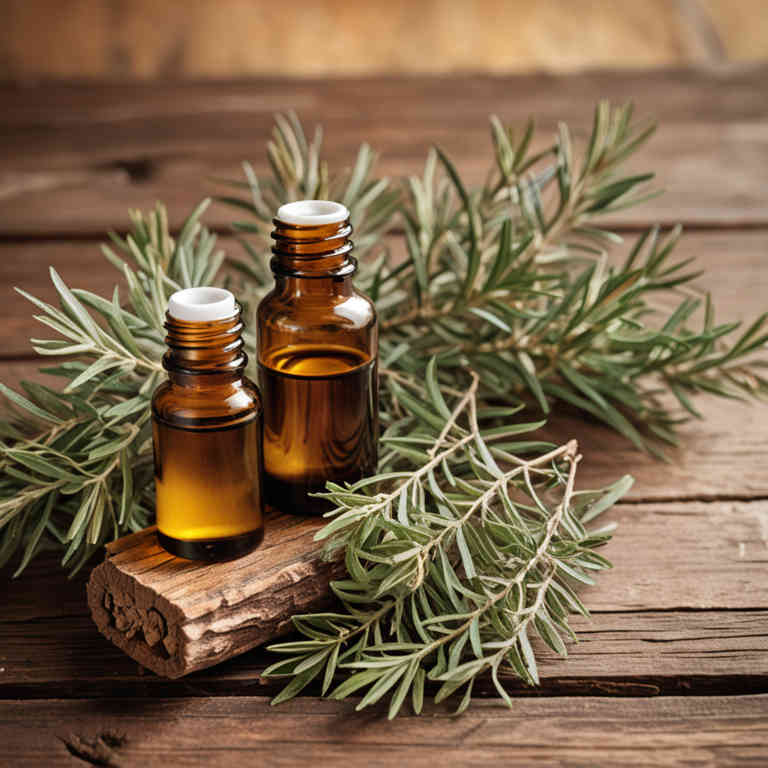Melaleuca alternifolia essential oil for medicinal use

Melaleuca alternifolia essential oil is a potent aromatic oil derived from the leaves of the tea tree, native to Australia.
It is widely used in herbalism for its antimicrobial, anti-inflammatory, and antifungal properties. This essential oil is commonly applied topically to treat skin infections, acne, and minor wounds due to its ability to combat bacterial and fungal growth. It can also be used in diffusers to support respiratory health and promote a sense of well-being.
In traditional and modern herbal practices, it is valued as a natural remedy for a variety of ailments.
Uses
Melaleuca alternifolia essential oil has been used to treat various ailments for centuries, particularly by Indigenous Australians who historically utilized the tea tree for its antimicrobial properties.
Traditionally, it was applied topically to heal wounds, reduce inflammation, and combat infections, often in the form of poultices or infused oils. In modern times, it is widely recognized for its antiseptic, anti-inflammatory, and immune-boosting benefits, making it a popular ingredient in skincare and aromatherapy products. It is also used to support respiratory health and as a natural remedy for skin conditions such as acne and eczema.
Due to its potent properties, it is often diluted before use to ensure safety and effectiveness.
Benefits
Melaleuca alternifolia essential oil has health benefits such as antimicrobial, anti-inflammatory, and antiseptic properties.
It is commonly used to support wound healing and treat skin infections due to its ability to kill bacteria, viruses, and fungi. The oil can also help alleviate symptoms of respiratory conditions like coughs and colds when used in diffusers or inhalation therapy. Additionally, it may aid in reducing inflammation and pain, making it useful for conditions such as arthritis.
Its versatility makes it a popular choice in both aromatherapy and natural medicine.
Constituents
Melaleuca alternifolia essential oil active constituents include terpenes, particularly monoterpenes and sesquiterpenes, as well as phenolic compounds such as flavonoids and phenolic acids.
These compounds contribute to its antimicrobial, anti-inflammatory, and antioxidant properties. The primary active components are cineole, terpinen-4-ol, and gallic acid, which are responsible for its therapeutic effects. Terpinen-4-ol is especially noted for its potent antibacterial and antifungal activity.
This essential oil is widely used in aromatherapy and natural medicine for its ability to support respiratory health, skin healing, and immune function.
Preparation
To make Melaleuca alternifolia essential oil, you will need fresh or dried leaves of the tea tree, a still for distillation, and a collection vessel.
Begin by placing the leaves in a distillation apparatus, ensuring they are evenly spread for optimal steam contact. Heat the water in the still until it reaches a gentle boil, allowing the steam to pass through the leaves and carry the volatile compounds into the collection vessel. Collect the essential oil as it condenses and separates from the water.
Finally, store the oil in a cool, dark place in a sealed glass container to preserve its potency and effectiveness.
Side Effects
Melaleuca alternifolia essential oil may lead to skin irritation or allergic reactions when applied topically, especially if not diluted properly.
It can also cause gastrointestinal discomfort if ingested, leading to nausea, vomiting, or stomach cramps. Prolonged use or high concentrations may result in respiratory irritation, including coughing or shortness of breath. In some cases, it may interact with medications, particularly those affecting the liver or blood pressure.
It is important to consult a healthcare professional before using this essential oil, especially for individuals with sensitive skin or existing health conditions.